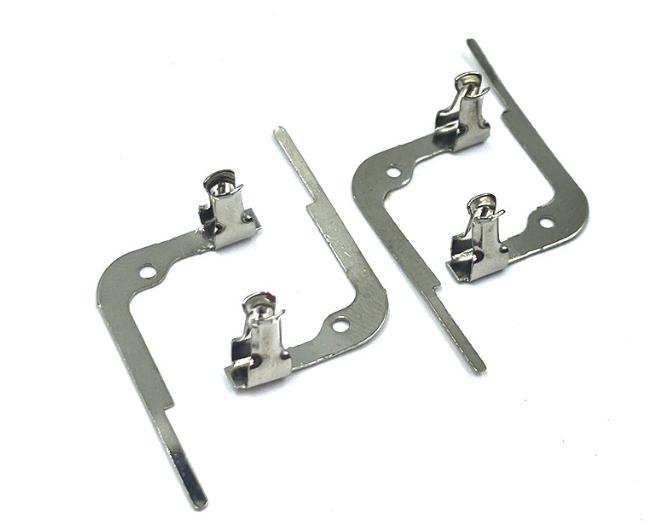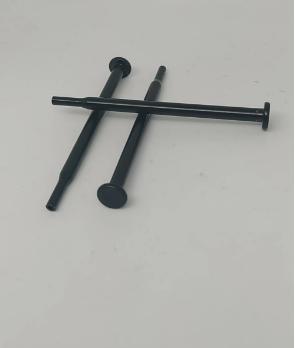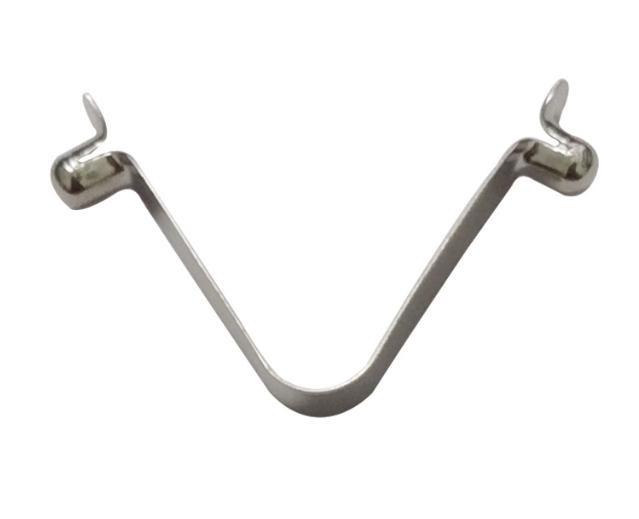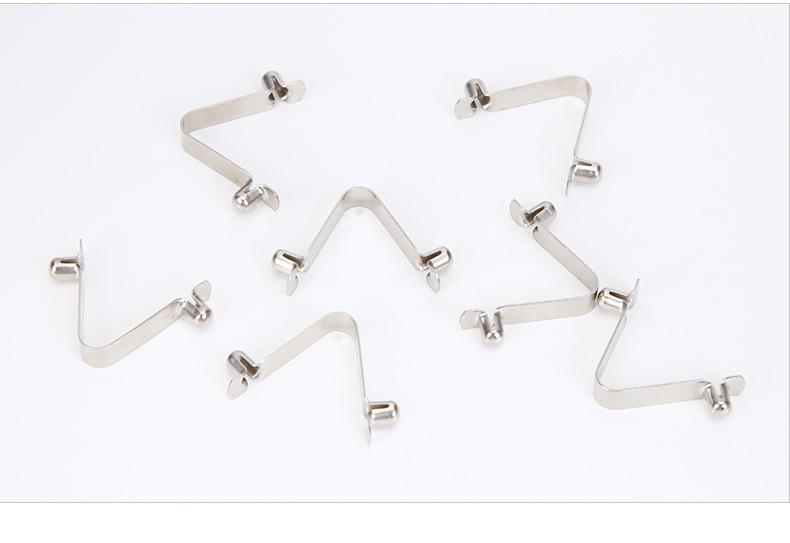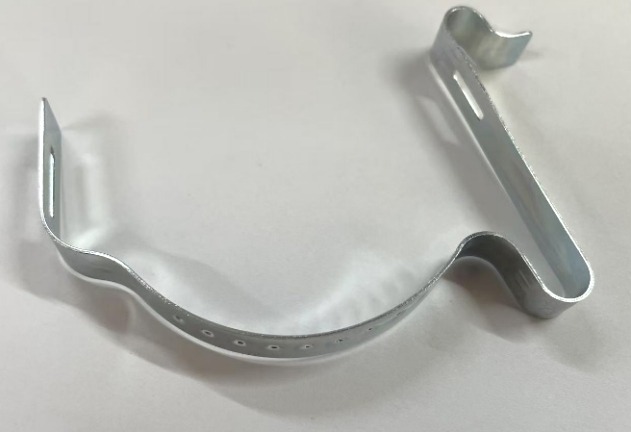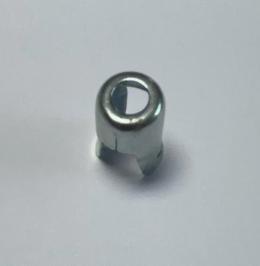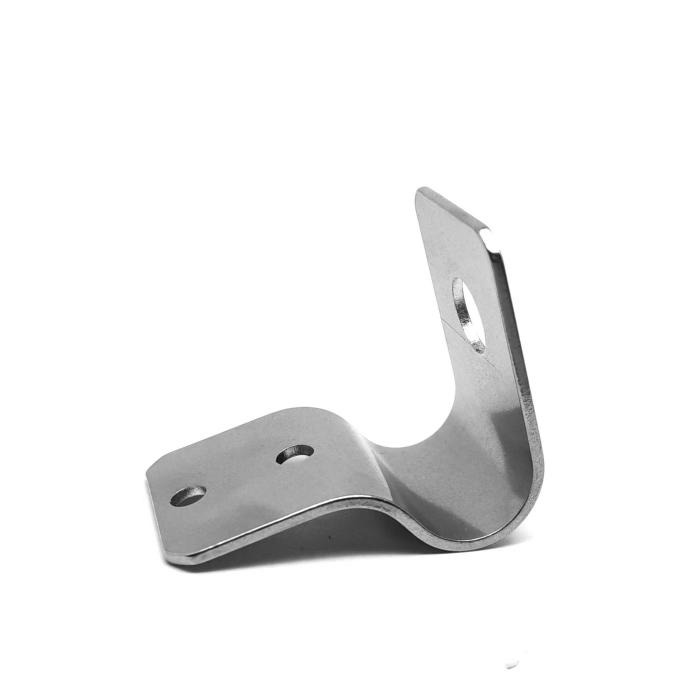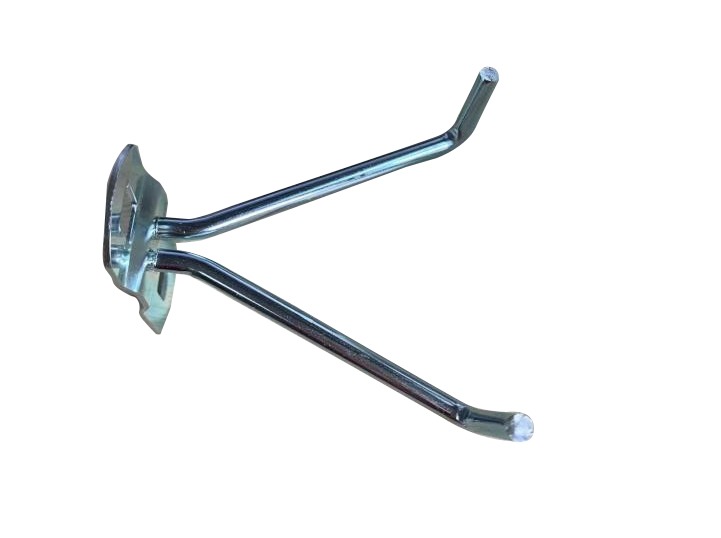Exploring Forming Techniques in Metal Stamping
One of the key aspects of metal stamping is the diversity of forming techniques used to produce intricate shapes, accurate measurements, and complex geometries. In this article, we explore the different forming techniques utilized in metal stamping, highlighting their innovations and applications across various industries.
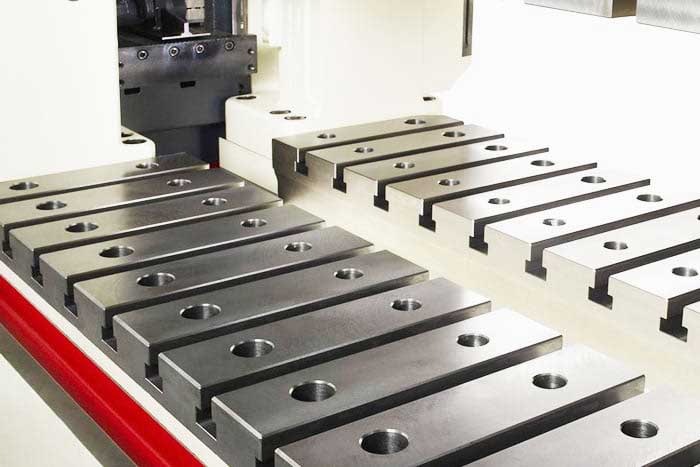
Key Forming Techniques in Metal Stamping
1. Blanking
Blanking is the first stage of metal stamping, in which the desired shape is cut from a larger metal sheet or coil. This process is normally carried out with a die and a punch. Blanking lays the basis for subsequent forming procedures by providing the component’s initial shape.
2. Bending
Bending is a common forming process for producing angular or curved features in metal components. Bending in metal stamping can be accomplished using a variety of techniques, including press brakes, roll forming, and rotary bending. These approaches enable the production of various bend angles and radii, hence meeting a wide range of design requirements.
3. Drawing
Drawing entails stretching a metal blank over a die cavity to create a hollow component of a given shape. Deep drawing, a subtype of drawing, is commonly used in metal stamping to create cylindrical or box-shaped pieces that are deeper than their diameter. Innovations in die design and lubricating procedures have increased the drawing process’s efficiency and quality.
4. Embossing and Coining
Embossing and coining are techniques for producing raised or depressed motifs on metal surfaces for aesthetic or utilitarian reasons. Embossing involves forcing metal into a die chamber to raise a design, logo, or pattern, whereas coining compresses metal to produce precise dimensional details. These techniques are widely used in the automobile, aerospace, and consumer electronics industries to mark and identify products.
5. Flanging and Hemming
Flanging and hemming are techniques used to form edges or lips on metal components for joining or reinforcement purposes. Flanging involves bending the edge of a metal sheet perpendicular to the surface, while hemming folds the edge back onto itself to create a smooth and secure joint. These techniques are extensively used in automotive body panels, household appliances, and HVAC systems.
6. Progressive Die Stamping
Progressive die stamping is a high-speed, automated method that produces complicated metal components with various features in a single step. This process entails feeding a metal strip through a number of dies, each of which performs a specific shaping or cutting action. Progressive die stamping has fast production rates, strict tolerances, and cost efficiency, making it ideal for mass producing components like connectors, brackets, and clips.
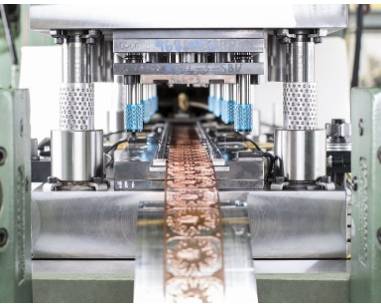
Innovations in Forming Techniques for Metal Stamping
In recent years, innovations in forming techniques have driven significant advancements in precision, efficiency, and versatility.
1. Hydroforming
Hydroforming is a sophisticated forming method that use hydraulic pressure to mold metal sheets or tubes into intricate patterns. Hydroforming involves placing a metal blank over a die cavity and subjecting it to internal hydraulic pressure, which causes it to conform to the shape of the die. This technique offers advantages such as uniform deformation, reduced tooling costs, and enhanced design flexibility, making it ideal for automotive body panels, aerospace components, and structural parts.
2. Incremental Sheet Forming (ISF)
Incremental sheet forming is a relatively new technique that involves shaping a metal sheet gradually through a series of small incremental deformations. Unlike traditional forming methods that use dedicated dies, ISF utilizes a CNC-controlled machining tool to deform the metal sheet directly. This approach offers greater flexibility, reduced tooling costs, and the ability to produce complex geometries with minimal setup time. ISF is particularly well-suited for prototyping, low-volume production, and customized components.
3. Electromagnetic Forming (EMF)
Electromagnetic forming utilizes electromagnetic forces to shape metal sheets without direct contact, offering several advantages over conventional forming techniques. By rapidly discharging high-energy electrical currents through a coil surrounding the metal workpiece, EMF induces a powerful magnetic field that accelerates a conductive workpiece, causing it to deform upon impact with a die. EMF enables rapid forming of complex shapes, reduced spring back, and enhanced material utilization, making it ideal for high-speed production and forming of lightweight materials such as aluminum and composites.
4. Additive Manufacturing Integrated Forming
Additive manufacturing (AM), commonly known as 3D printing, is increasingly integrated into metal forming processes to enhance design flexibility and manufacturing efficiency. By combining additive manufacturing with traditional metal stamping techniques, manufacturers can create hybrid tooling solutions that leverage the strengths of both processes. For example, AM can be used to fabricate customized die inserts with conformal cooling channels, improving heat dissipation and reducing cycle times. Additionally, AM enables the production of complex forming tools with internal features that would be difficult or impossible to achieve using conventional methods.
5. Flexible Roll Forming
Roll forming is a continuous bending process used to shape long metal strips into complex profiles by passing them through a series of rollers. Traditional roll forming setups are often limited to fixed geometries and require extensive tooling changes for different part configurations. However, advancements in flexible roll forming technologies, such as adjustable roll stands and robotic manipulation, enable rapid reconfiguration of tooling setups to accommodate diverse part geometries. Flexible roll forming offers increased production flexibility, reduced setup times, and enhanced adaptability to changing production demands.
6. Smart Die Technologies
Smart die technologies use sensors, actuators, and data analytics to improve the performance, dependability, and efficiency of metal stamping processes. These technologies offer real-time monitoring of process parameters such as temperature, force, and vibration, allowing for preventative maintenance and improvement of forming operations. Smart dies can also use adaptive control algorithms to dynamically modify process parameters, resulting in consistent component quality and lower scrap rates. Smart die systems use Industry 4.0 technology to pave the road for autonomous and data-driven metal forming operations.
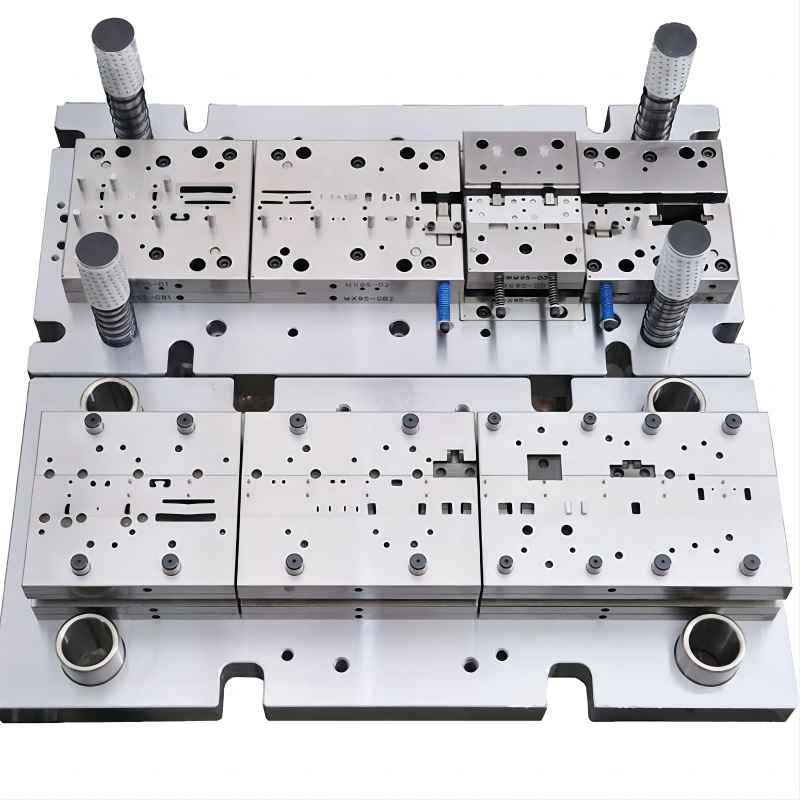
Applications Across Various Industries of Forming Techniques in Metal Stamping
1. Automotive Industry
- Body Panels: Forming techniques such as drawing and deep drawing are extensively used in the automotive industry for manufacturing body panels, including doors, hoods, fenders, and trunk lids.
- Chassis Components: Bending and forming techniques are employed to create chassis components such as frame rails, cross members, and suspension parts, ensuring structural integrity and durability.
- Engine Parts: Metal stamping techniques are used to produce car engine components such as cylinder heads, intake manifolds, and exhaust systems, meeting stringent performance and emissions standards.
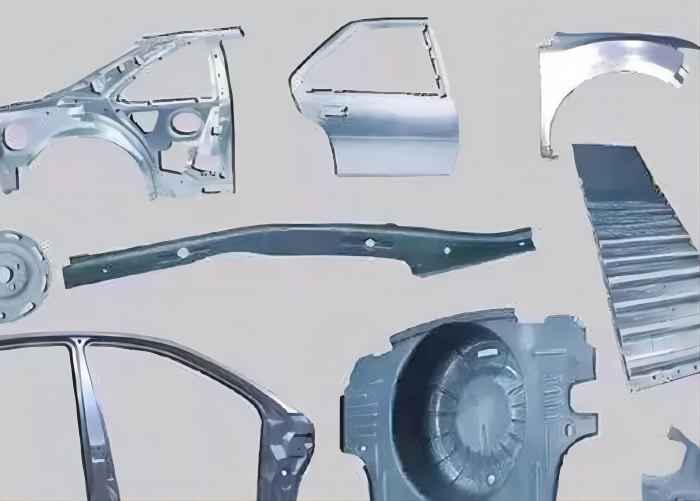
2. Aerospace Industry
- Aircraft Structures: Forming techniques play a critical role in manufacturing aircraft structures, including fuselage panels, wing ribs, and empennage components, ensuring lightweight construction and aerodynamic efficiency.
- Interior Components: Metal stamping is used to fabricate aircraft interior components such as seat frames, cabin partitions, and overhead bins, meeting safety, comfort, and weight requirements.
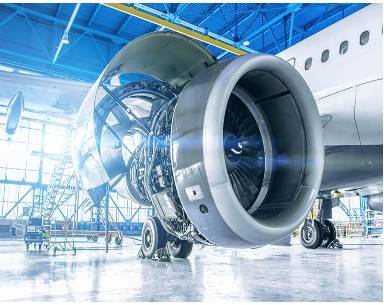
3. Electronics Industry
- Electronic Enclosures: Metal stamping techniques are used to fabricate electronic enclosures, chassis, and heat sinks for housing electronic components such as circuit boards, power supplies, and communication devices.
- Connectors and Terminals: Forming techniques are employed to produce connectors, terminals, and contact pins used in electrical and electronic applications, ensuring reliable connectivity and signal transmission.
4. Consumer Goods Industry
- Appliances: Metal stamping techniques are used in the production of household appliances such as refrigerators, washing machines, and ovens, forming components such as outer panels, door frames, and control panels.
- Tools and Hardware: Forming techniques are utilized to manufacture tools, hardware, and fasteners, including wrenches, screws, nuts, and bolts, meeting quality, strength, and dimensional requirements.
5. Medical and Healthcare Industry
- Medical Devices: Metal stamping techniques are employed in the manufacturing of medical devices and instruments, including surgical instruments, implantable devices, and diagnostic equipment, meeting regulatory standards and biocompatibility requirements.
- Orthopedic Implants: Forming techniques are used to produce orthopedic implants such as bone plates, screws, and joint prostheses, ensuring precise fit and compatibility with the human body.

6. Renewable Energy Industry
- Solar Panels: Metal stamping techniques are utilized in the fabrication of solar panels and mounting systems, forming components such as frames, brackets, and connectors, ensuring durability and reliability in harsh environmental conditions.
- Wind Turbines: Forming techniques play a role in manufacturing wind turbine components such as tower sections, nacelles, and rotor blades, meeting performance, efficiency, and safety standards.
Conclusion
Forming techniques in metal stamping are critical for accurately, efficiently, and consistently shaping raw materials into finished components. The evolving landscape of metal forming continues to drive innovation and enable the production of complex and high-quality metal stamping components across various industries. As the industry continues to evolve, embracing these innovative forming techniques will be essential for staying competitive in rapidly changing manufacturing environment.

